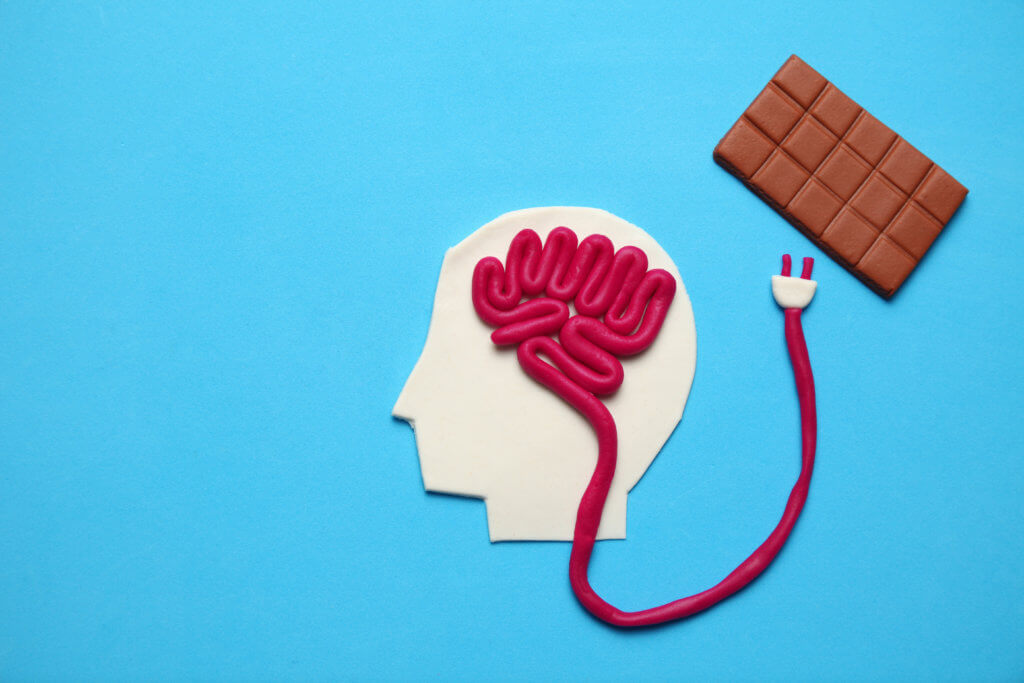Picture this: It’s barely an hour after a satisfying dinner, but you find yourself rummaging through the fridge, searching for something to munch on. If this scenario sounds all too familiar, you might be inclined to blame your insatiable appetite. But according to a study from UCLA psychologists, the real culprit may lie deep within your brain – in a cluster of cells that drives food-seeking behavior, even in the absence of hunger.
The research team, led by associate professor Avishek Adhikari, stumbled upon this discovery while investigating the role of the periaqueductal gray (PAG), a brainstem region that’s long been known as the brain’s “panic button,” triggering defensive behaviors like freezing or fleeing in the face of danger. To their surprise, they found a specific subset of PAG neurons, called vgat cells, that had nothing to do with fear and everything to do with foraging and feeding.
Using cutting-edge techniques, including genetically engineered viruses and miniature microscopes affixed to the mice’s heads, the researchers were able to selectively stimulate the vgat PAG cells and observe the effects on behavior. The results were striking: When activated, these cells sent the mice into a feeding frenzy, causing them to vigorously pursue live crickets and non-prey foods, even if they had just eaten a large meal. The stimulation also prompted the mice to confidently explore their surroundings and follow moving objects, like ping pong balls (although they didn’t try to eat those).
“The results suggest the following behavior is related more to wanting than to hunger,” Adhikari explains in a media release. “Hunger is aversive, meaning that mice usually avoid feeling hungry if they can. But they seek out activation of these cells, suggesting that the circuit is not causing hunger. Instead, we think this circuit causes the craving of highly rewarding, high-calorie food. These cells can cause the mouse to eat more high-calorie foods even in the absence of hunger.”

In fact, the urge to indulge in fatty, pleasurable foods like chocolate was so strong that the mice were willing to endure foot shocks to get their fix – something that satiated mice would typically avoid. On the flip side, when the researchers dampened the activity of the vgat PAG cells, the mice’s foraging behavior decreased, even when they were hungry.
“Mice show compulsive eating in the presence of aversive direct consequences when this circuit is active, and don’t search for food even if they’re hungry when it’s not active. This circuit can circumvent the normal hunger pressures of how, what and when to eat,” said Fernando Reis, the study’s lead author.
The implications of these findings extend far beyond the realm of rodent behavior. Humans also possess vgat PAG cells in the brainstem, suggesting that this food-seeking circuit may play a role in our own eating habits and, potentially, in disordered eating. An overactive circuit could lead to increased cravings and reward-seeking behavior, even in the absence of hunger, while an underactive circuit might result in reduced pleasure from eating, potentially contributing to conditions like anorexia.
“We’re doing new experiments based on these findings and learning that these cells induce eating of fatty and sugary foods, but not of vegetables in mice, suggesting this circuit may increase eating of junk food,” Reis added.
While more research is needed to confirm the presence and function of this circuit in humans, the discovery opens up exciting new avenues for understanding and potentially treating eating disorders. If the vgat PAG cells prove to be a key player in human food-seeking behavior, they could become a novel target for interventions aimed at curbing compulsive eating or boosting appetite in those struggling with restrictive eating disorders.
“The PAG “is very old in evolutionary history and because of that, it is functionally similar between humans and mice,” says Adhikari. “Although our findings were a surprise, it makes sense that food-seeking would be rooted in such an ancient part of the brain, since foraging is something all animals need to do.”
In the meantime, the next time you find yourself raiding the pantry shortly after a meal, take a moment to marvel at the complex neural circuitry that drives your cravings. And if you do indulge, don’t be too hard on yourself – after all, you might just be at the mercy of your brainstem’s ancient foraging instincts.












